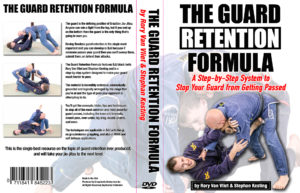There’s just something about jiu-jitsu that leads to a proliferation of styles of guard. From Z Guard to X Guard and from Spider Guard to Half Butterfly there are many, many different forms of closed, open and half guard, and new variations pop up all the time.
How do you know which type of guard to use when?
The Concept of Range in the Guard
There’s an organising principle that brings order to the chaos of different styles of guard… A concept that tells you when you should use which guard… A heuristic that simplifies your decision making process about what technique to use when.
And that concept is range.
The different forms of guard are range dependent – how far you are from your opponent.
If this is a topic you’d like to understand better then check out this detailed video below. In it Rory Van Vliet and I show you how the styles of guard change as your opponent gets closer or further away…
Furthest to Nearest Forms of Guard
Let’s take a look at some concrete examples of what we mean by all of this…
If you’re flat on your back in the recumbent guard, your feet pointing towards your opponent ready to push him away, then that’s obviously a pretty long range form of guard.
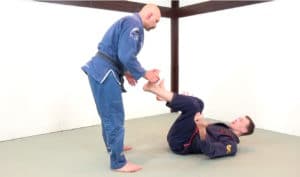
Another long-distance form of guard would be the butterfly or seated guard when your opponent is unattached to you and standing a few feet back from you.
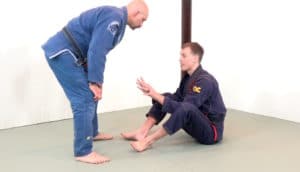
But if he’s in your deep half guard then that’s a much closer range. You can’t get any closer to his hips than this.
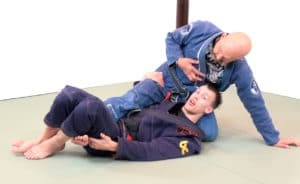
Each range of guard offers you different setups, attacks, and combinations.
For example, getting back to your feet with a technical standup motion is relatively easy from the longer range guards; kick him away and stand back up. To stand up from the closer range guards is still possible but becomes much more technical.
On the other hand, the closer range guards really allow you to clamp onto your opponent, get under his center of gravity, and set up some very powerful sweeps.
It’s not that long distance guards or short distance guards are worse or better.
You can’t always control the distance perfectly – in combat your opponent gets a vote too. So the important thing is to understand which range you’re at and then use the appropriate tools for that range.
Distance in Guard for Guard Retention
Distance is an incredibly important factor when it comes to defending the guard and trying to prevent your opponent’s guard pass attempts.
Simply put, the greater the range you have your opponent at then the more defensive options you have.
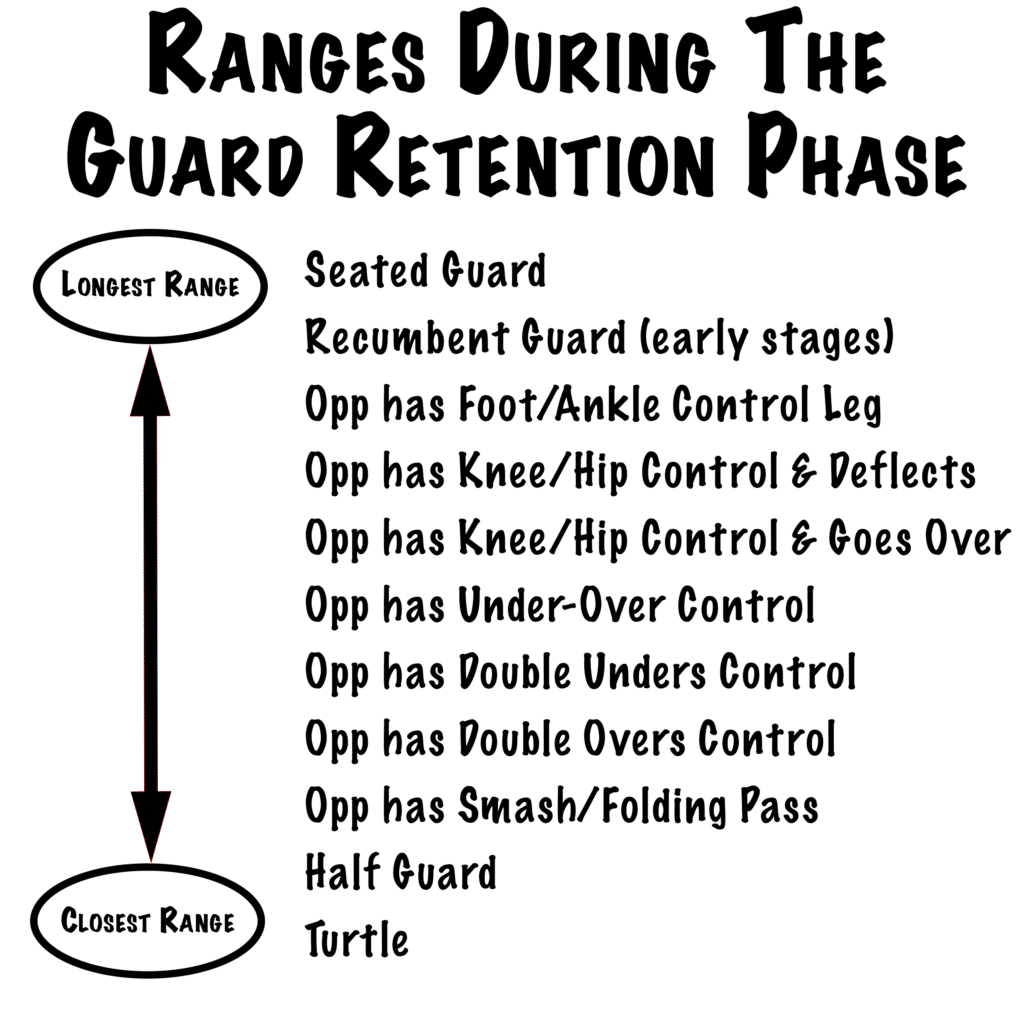
At the furthest ranges he has to beat your feet, your shins, your knees, your hands, your elbows and even your shoulders to pass your guard.
But in the deep half guard all he needs to do is extract his foot and – BOOM – he’s in side control.
This is NOT to say that the deep half guard isn’t useful; many players use it as their preferred form of guard. It simply means that the closer you let your opponent get then the less margin for error you have (and your pin escapes better be on point too).
An In-depth Masterclass on Guard Retention
In the latest Grapplearts instructional – The Guard Retention Formula – Rory Van Vliet and I give you all the defensive tools you’ll need to shut down your opponent’s guard passing.
We’ve organised the material by range so that you can put everything into context and learn it as fast as possible.
We start with sitting guard – the longest range guard – and give you everything you need to stop your opponent from using either mobility-based or pressure-based passing.
Then we proceed though the ranges of guard, from furthest to closest.
First you’ll learn the most efficient ways to actually do the guard passes themselves, and then give you the exact steps to counter every pass at each range.
This is an incredibly good BJJ instructional that’ll help both gi and no gi grapplers.
And it comes with my unmatched 365 day full moneyback guarantee if you’re not happy with it for any reason.
Click here for more information about The Guard Retention Formula, or if you feel you can take my word for it click one of the buttons below to order this 6 volume, jiu-jitsu gamechanger of an instructional.
Cheers,
Stephan
The post Range and Distance in Guard appeared first on Grapplearts.

